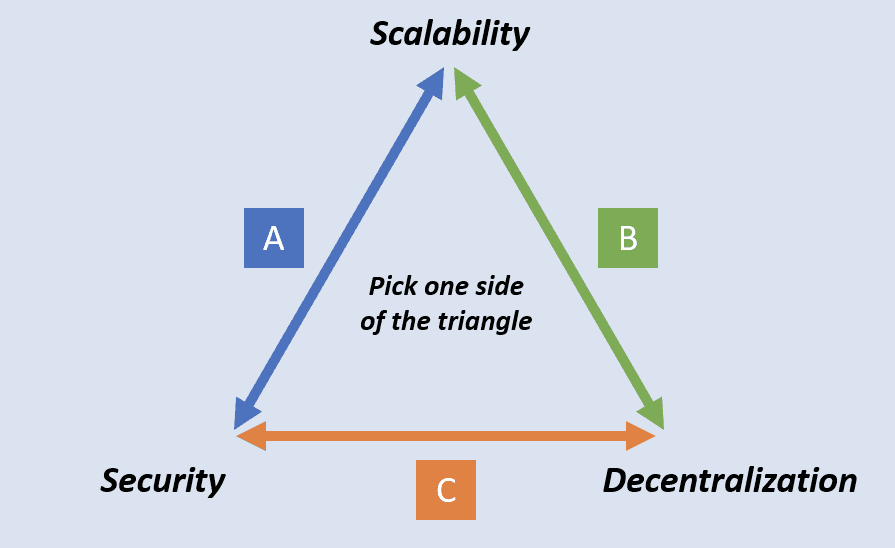The structure of a blockchain is divided into several layers, each with different functions. There are six layers in the blockchain logic architecture:
- Data Layer
- Network Layer
- Consensus Layer
- Incentive Layer
- Contract Layer
- DApp Layer
Layer 0, also known as the “Data Transmission Layer,” is created to address the aforementioned issues of Layer 1. Scalability solutions at Layer 0 are solutions that do not alter the structure of the blockchain and retain its original ecosystem rules to improve performance. Layer 0 solutions are highly flexible because they do not impact the blockchain itself and are also compatible with Layer 1 and Layer 2 scaling solutions.
Understanding Layer 0 The blockchain “impossible trilemma,” which consists of scalability, security, and decentralization.
Layer 0 protocols will help overcome the challenges facing Layer 1 networks like Ethereum. By creating a more flexible underlying infrastructure and allowing developers to launch blockchains tailored to their needs, Layer 0 aims to more effectively address issues such as scalability and interoperability.
Interoperability Improving interoperability will make the user experience much more seamless and convenient, especially in the context of the numerous Layer 1 blockchains currently available.
Blockchain networks built on the same Layer 0 protocol can interact with each other by default without the need for additional bridge types. This will enhance the user experience, reduce costs, and avoid risks such as attacks on bridges.
Scalability Blockchains like Ethereum, or even Solana, often face congestion because a single Layer 1 protocol provides all the critical functions, such as transaction execution, consensus, and data availability. This creates a bottleneck when scaling, while Layer 0 can alleviate this by delegating these critical functions to different blockchains.
This design ensures that each blockchain network built on the same Layer 0 infrastructure can optimize specific tasks, thereby enhancing scalability.
Flexibility for Developers To encourage developers to build on them, Layer 0 protocols often provide easy-to-use software development kits (SDKs) and seamless interfaces to ensure developers can easily launch blockchains tailored to their needs.
https://bitforum.net – Crypto forum discussions about all aspects of cryptocurrency bitforum socialfi #InnovationSocialNetwork
